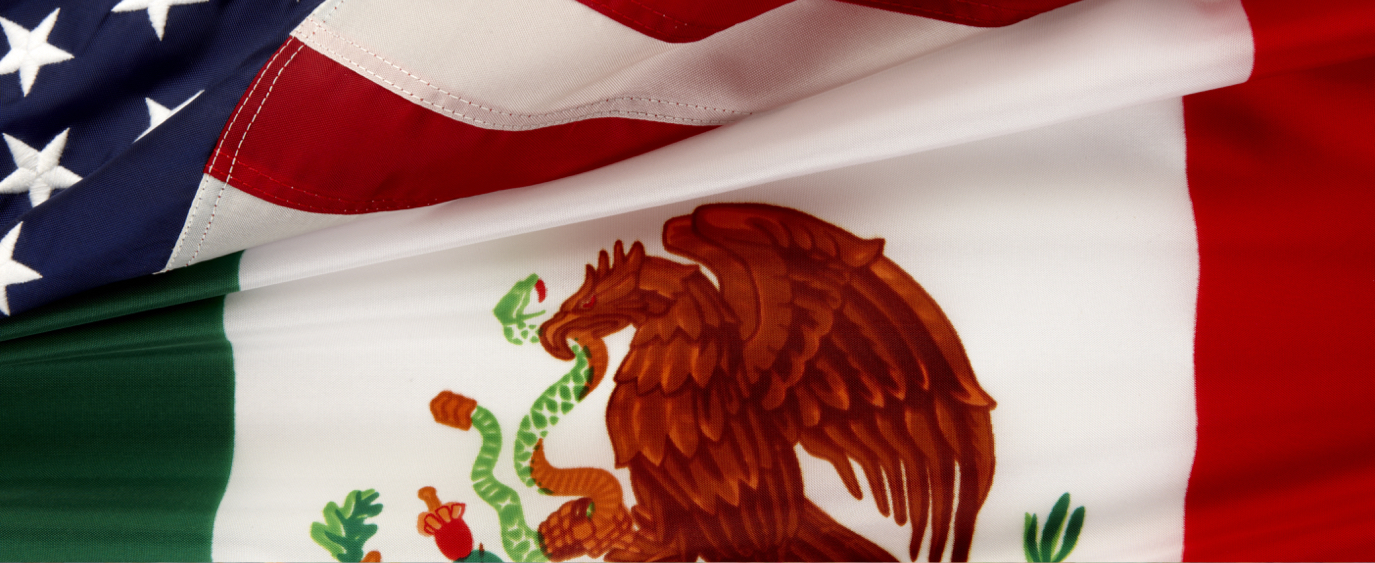Aug 28, 2018
What is NAFTA? How Trump’s Trade Deal with Mexico Could Affect You
Changes to the trade deal could make cars more expensive.

On Monday, President Trump announced potentially far-reaching changes to the North American Free Trade Agreement (NAFTA), a long-standing economic treaty between the U.S., Mexico, and Canada.
The proposed changes would relate primarily to car manufacturing, but they also concern agriculture and trade dispute resolutions.
Here’s what it all means (and what it means for you):
What is NAFTA?
NAFTA, signed into law nearly 25 years ago, is the largest trade deal in the world, affecting hundreds of millions of workers and consumers, and trillions of dollars worth of economic production.
It created a single trading bloc in North America, and affects nearly all aspects of the economies of the three nations involved in the treaty, which have a combined GDP of $21 trillion.
NAFTA affects more than just cars. It eliminates most tariffs and provides for the seamless import and export of goods across the three nations including agricultural products, textiles, insurance and intellectual property, among other things.
What changes to NAFTA is Trump proposing?
The Trump administration hopes to make alterations regarding car manufacturing, as well as agricultural tariffs and trade dispute resolutions.
NAFTA is the largest trade deal in the world, affecting hundreds of millions of workers and consumers
The new NAFTA rules would require 75% of the value of North America automobiles to be made in the NAFTA zone, up from 62.5%, according to the New York Times. U.S. car manufacturers routinely import parts from overseas, primarily from China and other parts of Asia.
The new rules also stipulate that 40% to 45% of all NAFTA zone car manufacturing would have to occur in countries where workers earn $16 or more per hour.
That tweak could result in more automobile manufacturing being handled in the U.S., according to reports.
The changes would be in place for 16 years, but would be revisited every six years.
Why is Trump doing this?
President Trump has made overhauling NAFTA a signature part of his agenda. He has blamed NAFTA for losses in manufacturing and a decline in wages in the U.S.
What does this mean for you?
Changes to NAFTA that make it more expensive to manufacture cars could result in higher prices for automobiles in the U.S.
What’s a bilateral agreement?
Trade agreements can exist between various nations, or just two nations. When they are between two nations, they are known as bilateral agreements. When they are between multiple countries, they are called multilateral agreements. (When three nations are involved, they can sometimes be called trilateral deals.)
Trump has proposed turning NAFTA, currently a trilateral deal, into two bilateral treaties. His administration has negotiated the recent changes with Mexico, eliminating Canada from the deal-making process.
Trump has suggested that Canada would have to negotiate its own bilateral deal with the U.S., or face new tariffs on its exports.
However, Canada is a part of the original NAFTA agreement, and numerous U.S. states and Mexico see it as critical to the trade bloc and for exports. Canada is also a key ally and defense partner for the U.S.
Fans and critics of NAFTA
Supporters of NAFTA credit it with an uptick in manufacturing across the three countries, and reduced prices for consumers. Critics, however, say it has led to job losses, particularly in the U.S. where the cost of manufacturing is much higher than Mexico.
Trade between the three countries has quadrupled to $800 billion since 1994, according to the U.S. Department of State, which also claims that NAFTA supports 3 million U.S. jobs that depend on exports.
Are there other trade agreements?
Yes. The U.S. has negotiated a total of 14 trade agreements, with 20 countries. Others include the Central American Free Trade Agreement, and numerous bilateral agreements with countries including Israel, Panama, and South Korea.
Trump pulled out of a trade treaty called the Trans-Pacific Partnership agreement in 2017, which would have eliminated numerous tariffs between 12 countries including Japan, Canada, Mexico, Vietnam and Australia.
With the U.S., the TPP would have created the largest trading bloc in the world, worth about 40% of all global trade.
The president has stated his preference for one-on-one trade deals, where he can potentially leverage the economic might of the U.S. against smaller countries.
Important note
Trump does not have the authority to revise NAFTA on his own. Congress must weigh in and approve changes with a vote.
Who created NAFTA?
President Bill Clinton signed the NAFTA agreement into law in 1994, but President Ronald Reagan floated the idea for a free trade zone in the 1980s. NAFTA generally eliminates the tariffs between the Canada, Mexico, and the U.S.











